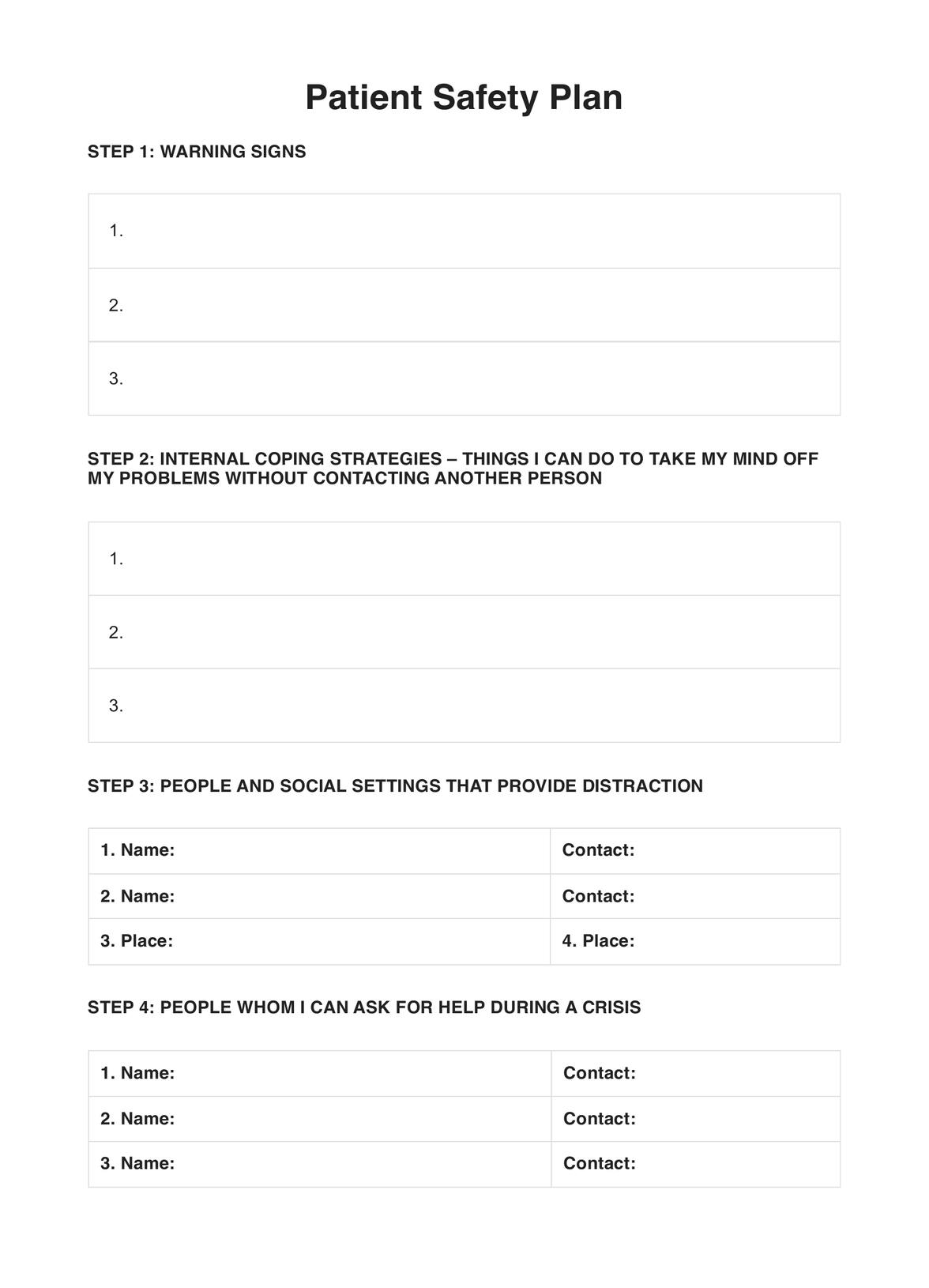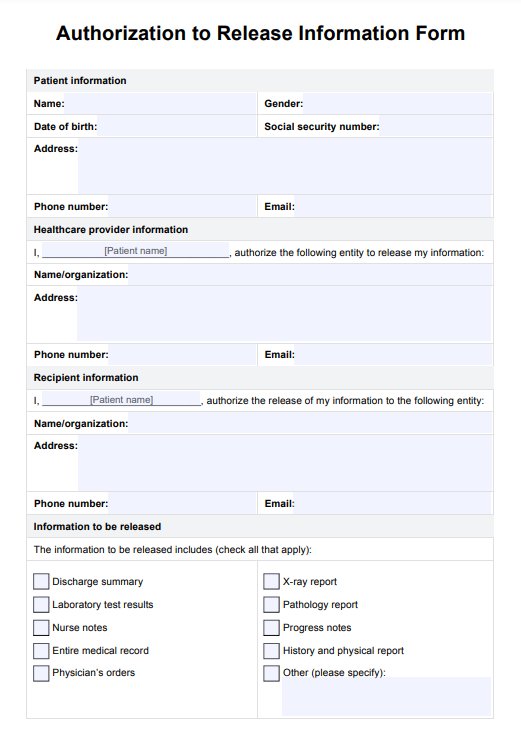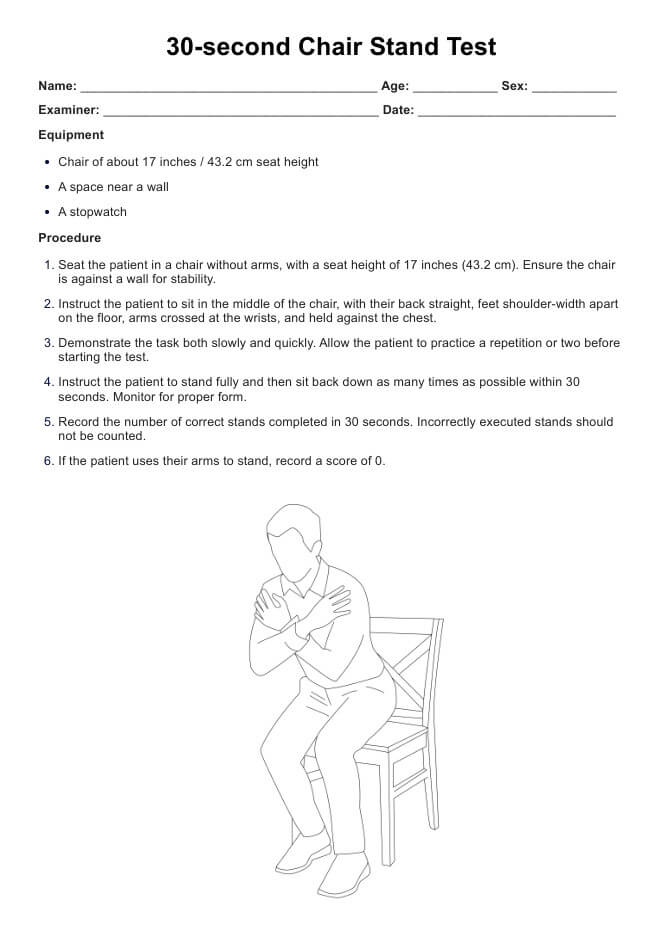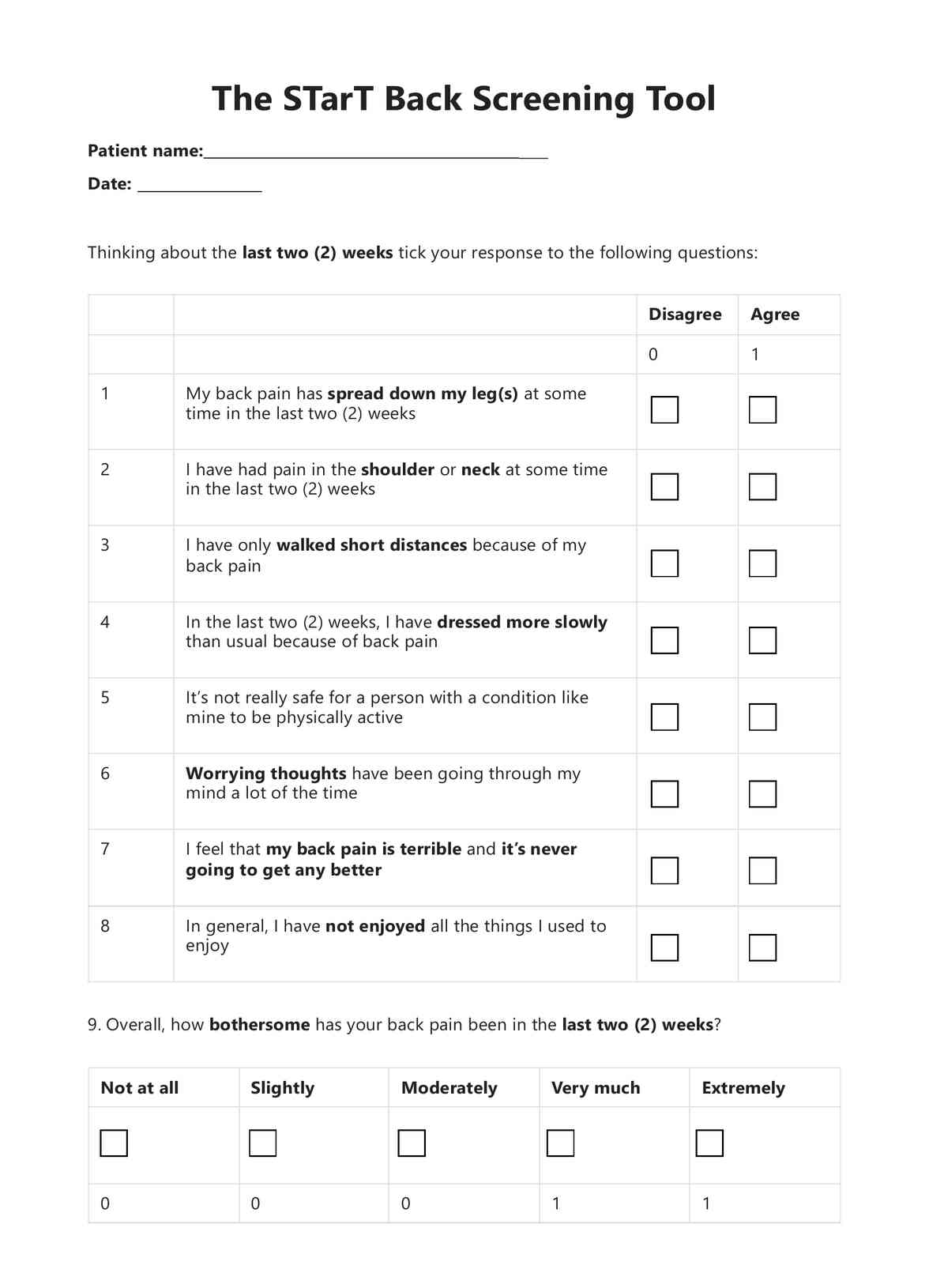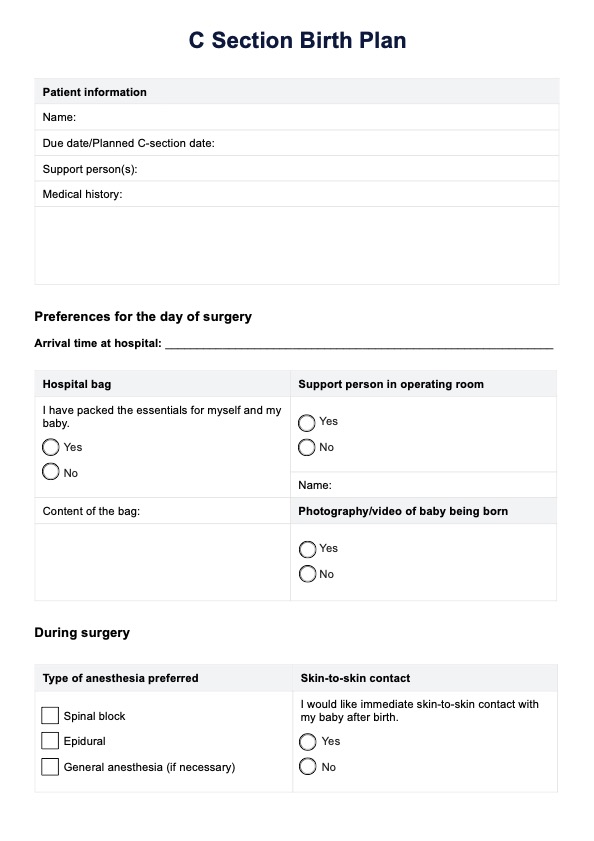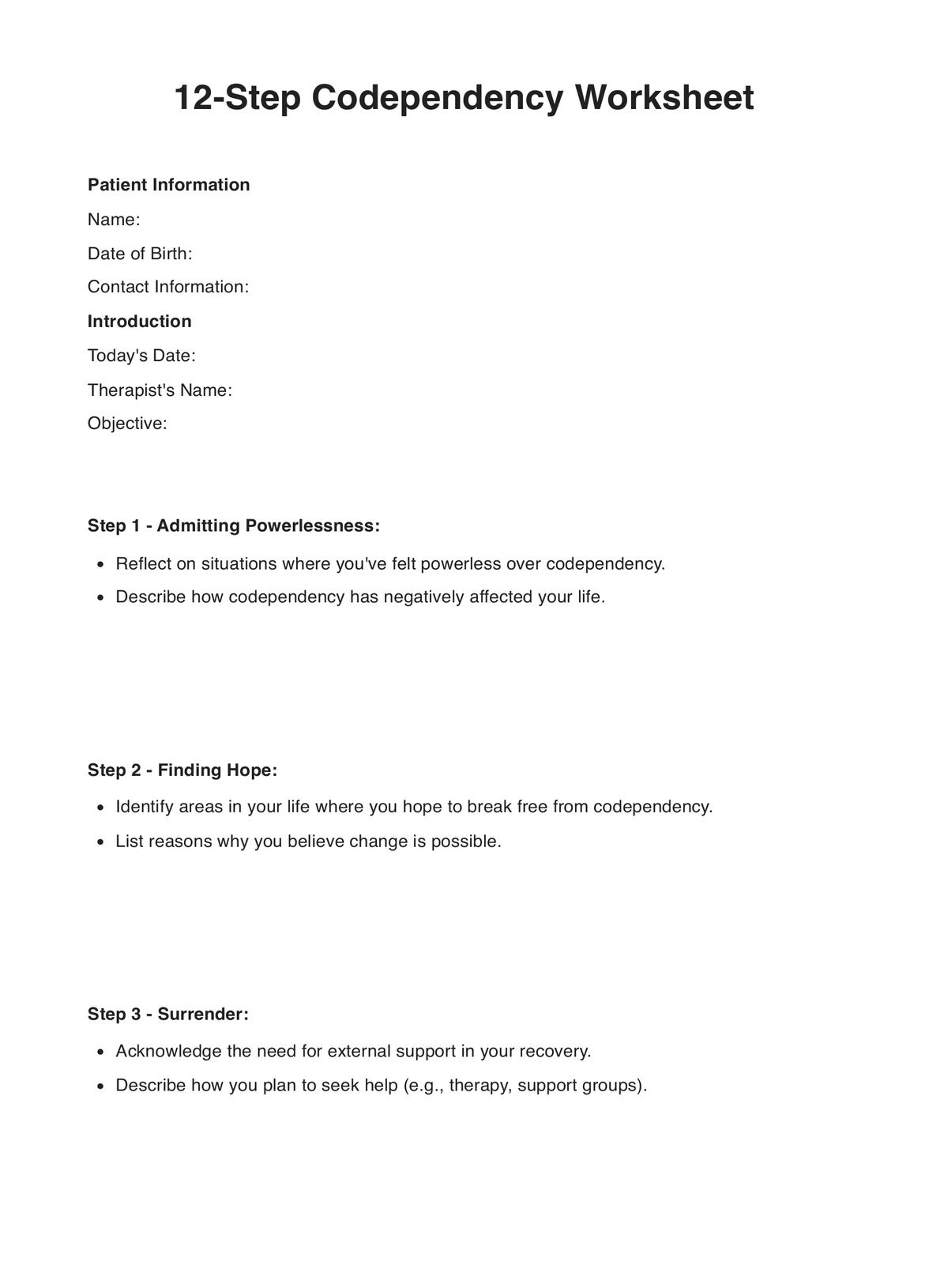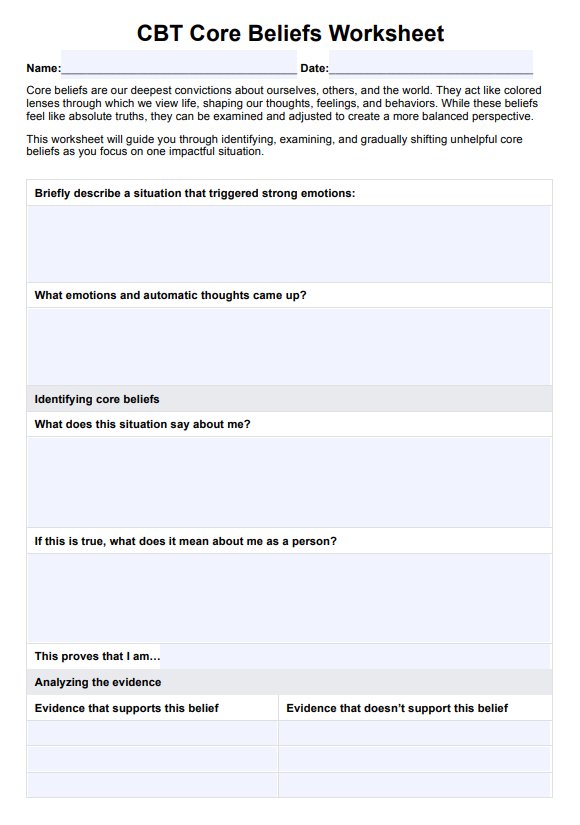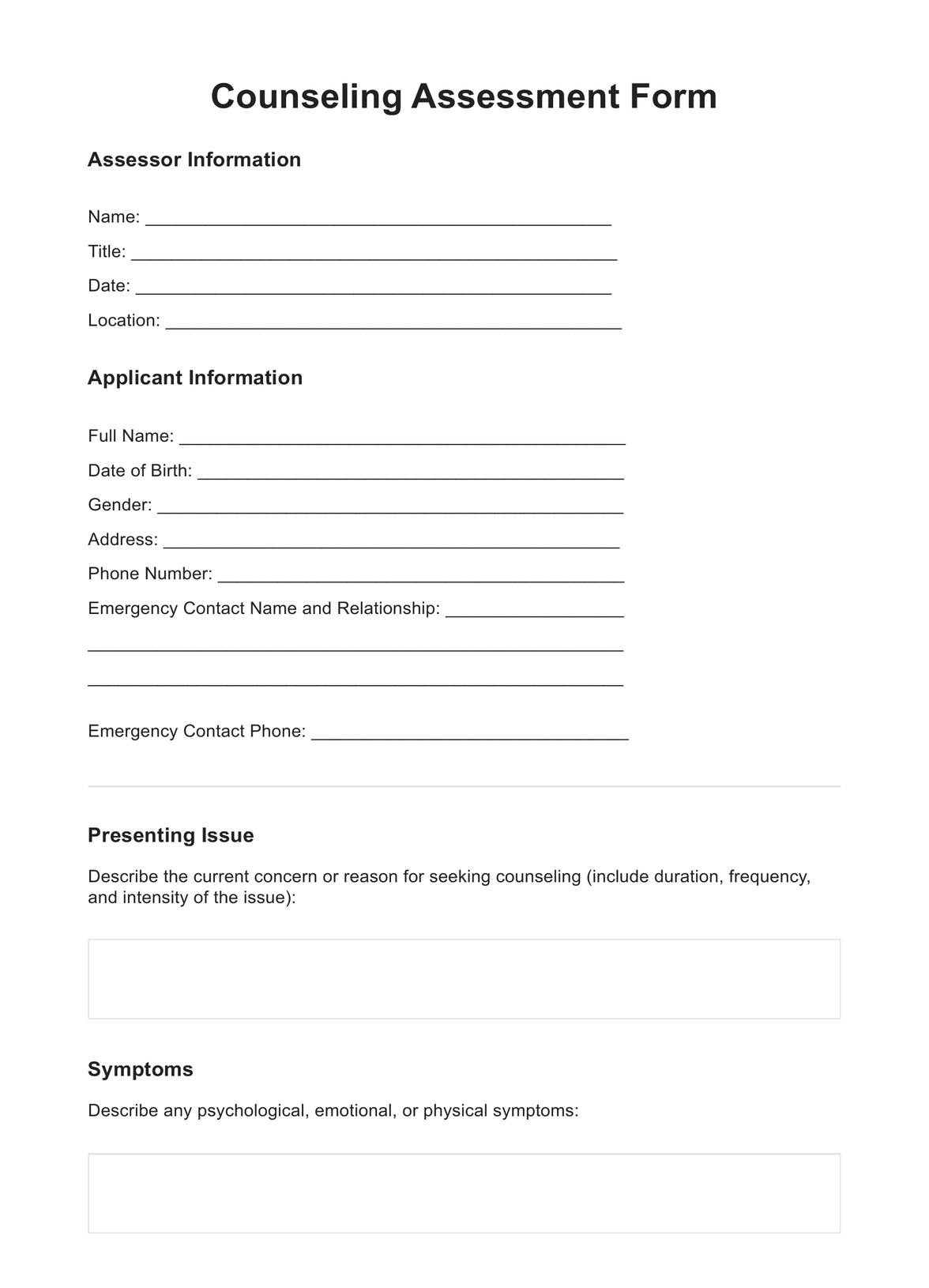Parkinson’s Tremor Test
One of the symptoms of patients who might have Parkinson’s Disease is tremors, especially while at rest. Conduct the Parkinson’s Tremor Test to screen patients for tremors.


What is the Parkinson’s Tremor Test?
Before we discuss the Parkinson’s Tremor Test properly, let’s briefly talk about tremors in general.
When a person experiences tremors, certain body parts tremble involuntarily. There are three kinds of tremors:
- Action Tremor - This type of tremor emerges whenever a person is moving. It can be any movement, like opening and closing your eyes or hands.
- Postural Tremor - This type of tremor emerges whenever a person attempts to maintain a position against gravity. An example of this would be stretching your arms and maintaining their positions.
- Resting Tremor - This type of tremor is active when the patient is resting. More often than not, this tremor manifests in the patient’s hands and can be observed even when you haven’t done testing. This is also the specific tremor commonly observed by professionals screening patients for Parkinson’s Disease.
Tremors can be suppressed in different ways, and patients may sometimes be unaware they are suppressing their tremors (like when they suddenly shift their posture).
The Parkinson’s Tremor Test was developed so healthcare professionals can assess patients for tremors using methods that unearth them.
Check out this video to see how the Unified Parkinson's Rating Scale can be used to assess Parkinson's Disease in patients:
Parkinson’s Tremor Test Template
Parkinson’s Tremor Test Example
How is the Parkinson’s Tremor Test conducted?
We at Carepatron have created a Parkinson’s Tremor Test sheet template. We will show it to you in the next section after we discuss how this test is conducted.
Before conducting the Parkinson’s Tremor Test, you must prepare two comfortable chairs. These chairs must have backrests so your patient can relax (and so they don’t fall backward by accident). The patient will be seated throughout this entire test, while you will be seated beside them or in front because you will be instructing them on what to do to get their potential tremors to emerge. Once you’re both seated, you can begin the test.
Here’s what you need to do:
- Action Tremors Test
- Have your patient outstretch their arm and point their index finger.
- You need to be positioned where the tip of the patient’s index finger can touch the tip of your index finger while their arm is fully outstretched.
- Have your patient touch the tip of your index finger, then have them touch their nose with their index finger.
- Have them alternate touching their nose and your index finger repeatedly but slowly.
- Have them do this for a while until you spot tremors or confirm that they don’t have Action Tremors.
- Postural Tremor Test
- Have your patient outstretch both arms forward.
- While maintaining their arms outstretched, have your patient spread their fingers out as much as possible.
- Have them maintain this position for a few minutes. Between 2 to 5 should be good. Postural Tremors may emerge in just a few seconds to a few minutes, so it’s best to wait a while.
- Resting Tremor Test
- This is the easiest of the three tests because neither you nor the patient have to do anything. You only need to tell your patient to sit comfortably while their hands are resting on their thighs.
- Wait for a while (at least five minutes) until tremors start to emerge or if none emerge at all.
When is it best to conduct the Parkinson’s Tremor Test?
Before you conduct neurological tests and scans on a patient for Parkinson’s Disease, it’s always best to determine if the patient is eligible for such tests. For them to be eligible, they need to have the following symptoms.
- Bradykinesia, which is the slowness of movement
- If their arms, legs, and/or trunk are showing signs of rigidity (there is resistance to passive movement)
- If they have trouble maintaining their balance and are prone to falling
- If there are tremors in their limbs, which is what this test is for
If your patient seems to have these symptoms while discussing their medical history, it’s best to inform them you will conduct a series of tests, one of which should be the Parkinson’s Tremor Test.
When we say “series of tests,” we don’t just mean the three tests that make up the Parkinson’s Tremor Test. We also mean other Parkinson’s screening tests. The Tremor Test should always be included in a comprehensive examination. This is because it shouldn’t be the sole assessment to determine an official diagnosis. It’s recommended you conduct the Bradykinesia Test, Parkinson’s Rigidity Test, and even a gait or balance test to check for signs of Parkinson’s Disease before you endorse them for scans and neurological tests.
Comprehensive examinations are important because there is a chance you might misdiagnose a patient for Parkinson’s Disease. Based on the findings of N.P.S. Bajaj et al. (Accuracy of clinical diagnosis in tremulous parkinsonian patients: a blinded video study. J Neurol Neurosurg Psychiatry, 81(11):1223–1228, Nov 2010) and C.B. Levine et al. (Diagnosis and treatment of Parkinson’s disease: a systematic review of the literature. Evid Rep Technol Assess (Summ), (57):1–4, May 2003), the rate of misdiagnosing a patient for Parkinson’s Disease, even among experienced neurologists, is twenty-five percent.
You can also use the Balance Test and Parkinson’s balance test templates the to assess and monitor a patient’s stability and coordination. Incorporating the Bradykinesia Test Template can help evaluate the speed of movement, which is crucial for diagnosing motor control issues. Additionally, the Parkinson’s Rigidity Test Template is valuable for identifying muscle stiffness and rigidity commonly associated with Parkinson’s disease.
What are the benefits of the Parkinson’s Tremor Test?
It’s a good way to screen patients who are likely to have Parkinson’s Disease.
As mentioned earlier, it’s always best to screen patients before considering them for scans and neurological tests for Parkinson’s Disease. These screening tests include the Parkinson’s Tremor Test. The reason why this should be one of the first tests to be conducted is that there is a chance that a misdiagnosis can be made.
The Parkinson’s Tremor Test, along with the Parkinson’s Rigidity Test and Bradykinesia, will gauge the patients for disease symptoms. If these tests detect symptoms, then the patient should undergo scans and neurological tests because there’s enough grounding to consider the possibility they have the disease.
The Parkinson’s Tremor Test is easy to conduct.
The Parkinson’s Tremor Test is quite easy to conduct because it doesn’t require any special equipment for the healthcare professional to check for tremors. All they need are two chairs.
In terms of conducting the tests themselves, the healthcare professional simply needs to tell the patient the instructions and then have them do each one. Besides that, they just need to wait a bit and see if tremors emerge, then note them down. That’s it!
It can be conducted as a way to monitor patients down the line.
Unfortunately, Parkinson’s Disease doesn’t have a cure, but it can be made manageable! Treatment for this disease can involve medication, physical therapy, and even surgery, though the last one should be the last resort considering this involves operating on the brain.
For the sake of example, let’s say you developed and implemented a treatment plan for your patient with Parkinson’s Disease, and your plan involves medication and having them take physical therapy. It’s only natural to wonder how your patient is doing, so routine check-ups should be conducted.
During a routine check-up, you can conduct the Parkinson’s Tremor Test again to check if the tremors are still present, or at the very least, the tremors aren’t as bad as they were before.
If the tremors are present, but they no longer seem as bad as when you first conducted this test, or if the tremors are no longer present, especially after waiting for a while, it’s safe to say your patient is getting better (even if the progress is slow) and your treatment plan is working. If the tremors are still there and the intensity is the same or worse than before, you might want to change your treatment plan and see if those changes will do the trick.
Commonly asked questions
No. The Parkinson’s Tremor Test only checks if the patient has tremors in their body. It doesn’t assess other symptoms, so it won’t give you the full picture of the patient.
You should conduct tests that check for rigidity, gait, balance, and Bradykinesia. It’s best to do these before conducting scans and neurological tests.
It depends on the patient. Some patients will have tremors that will show up in seconds when you conduct the tests. Some will take minutes. It’s best to allot enough waiting time before concluding if they don’t have tremors.


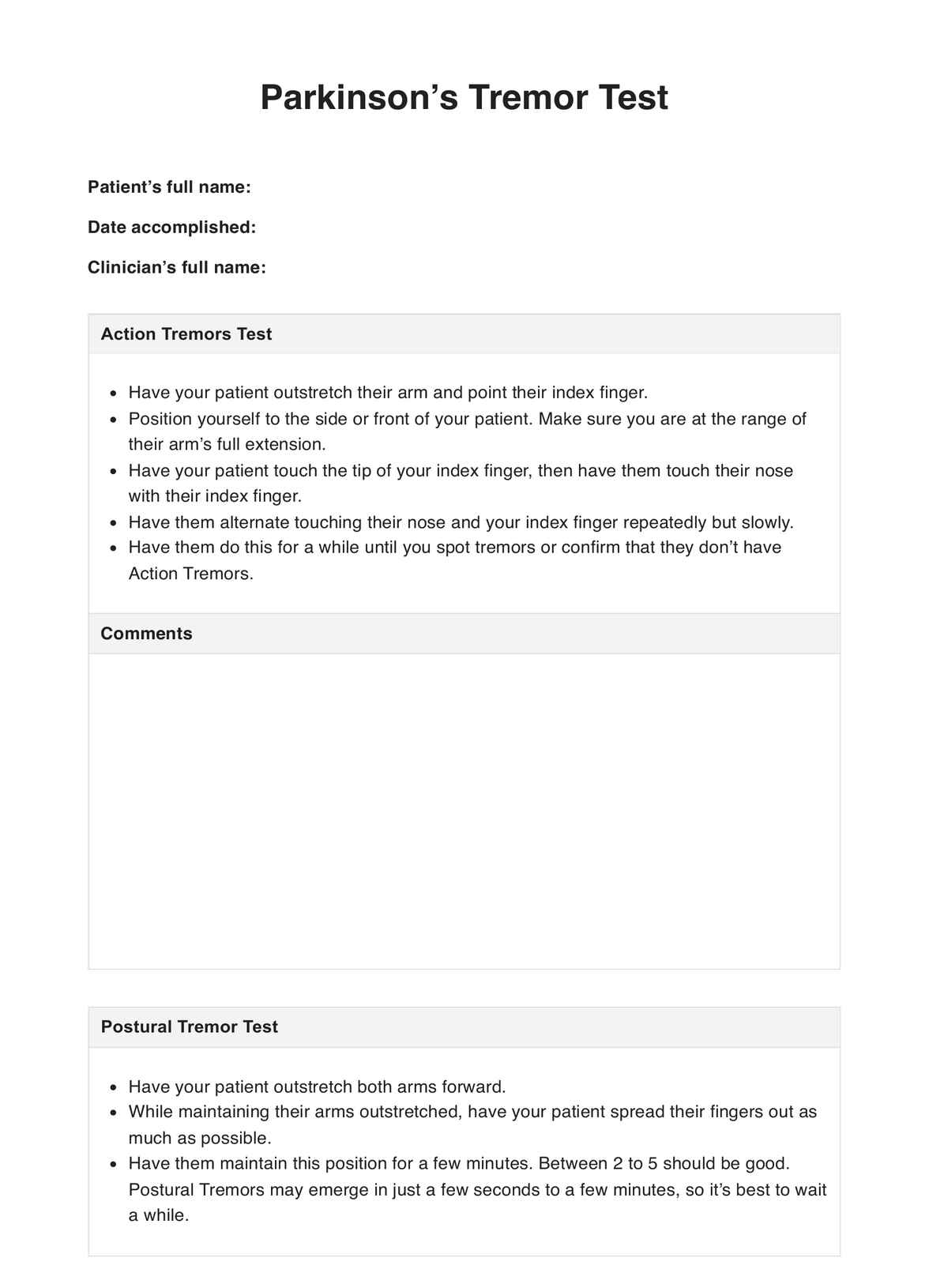




















-template.jpg)
















































































